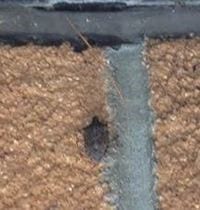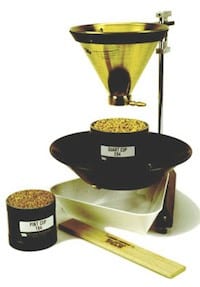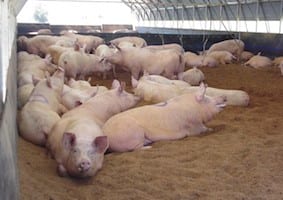Hello,
More soybean fields were being harvested this past week before the rain. I was able to complete the county weed survey in the southern half of the county on Wednesday. While doing this, I spoke to a farmer who ran a couple fields between 57-60 bushels per acre. Results of the weed survey came in similar to last year with 100 fields surveyed that represented approximately 3360 acres checked. 32 fields with Marestail, 24 fields with giant ragweed, 13 fields with volunteer corn, 4 fields with foxtail, 1 field with pigweed. Several soybean fields were weed free.
The first Tuesday in December will be the Hardin County Agriculture Hall of Fame Banquet. Now is the time to nominate deserving individuals who have made an outstanding contribution to agriculture. I have attached a copy of the Ag Hall of Fame Purpose and Nomination form. This form can also be downloaded from hardin.osu.edu or picked up at the Extension office. Please check out the application and consider nominating someone, or having someone else nominate a person by Friday, October 17. Also, if you are planning to attend this year’s Hardin County Sheep Tour, the October 10 deadline for making hotel registrations and calling Madelyn Lowery is this Friday. See the attached news release for more details.
Ag Hall of Fame Purpose and Nomination form 2014
Ag Hall of Fame Purpose and Nomination form 2014
Nutrient Management are two very often used words after this summer’s algal bloom in the western Lake Erie basin. See the new attached brochure or go to nutrienteducation.osu.edu to find out the procedure for obtaining fertilizer certification. Also, I have attached an article shared by Darke County Extension Educator Sam Custer about Manure Regulation in Ohio. Although manure is not part of the new fertilizer certification, there are guidelines for livestock farms to follow. Below are some articles that you may be interested in reading.
steps to be fertilizer licensed brochure
Stalk Rots Showing Up in Some Corn Fields – Pierce Paul, Peter Thomison
As corn harvest beings across the state, reports of stalk rot are coming in from some locations. Several factors may contribute to stalk rot, including extreme weather conditions, insects and diseases. Although it is often difficult to distinguish between stalk rots caused by these different factors, mid- to late-season northern corn leaf blight (NCLB) may have been the culprit this year. NCLB reached fairly high levels in some fields, particularly in those planted with susceptible hybrids. Go to http://corn.osu.edu/newsletters/2014/2014-33/stalk-rots-showing-up-in-some-corn-fields to continue reading this article.
Brown Marmorated Stink Bugs on the Move into Homes and Buildings – Andy Michel
With the cooler night temperatures, shorter day lengths and maturing crops, there is not much left for brown marmorated stink bugs to do except get ready for winter. The “marmies” prefer to spend the winter in homes or buildings, where they tend to be insulated from the cold temperatures. They overwinter as adults, and then emerge the following spring and lay eggs. Go to http://corn.osu.edu/newsletters/2014/2014-33/brown-marmorated-stink-bugs-on-the-move-into-homes-and-buildings to continue reading this article.
Corn Grain Test Weight – R.L. (Bob) Nielsen – Purdue
Among the top 10 most discussed (and cussed) topics at hometown cafes during harvest season is the test weight of the grain being reported from corn fields in the neighborhood. Test weight is measured in the U.S. in terms of pounds of grain per volumetric bushel. In practice, test weight measurements are based on the weight of grain that fills a quart container (32 qts to a bushel) that meets the specifications of the USDA-FGIS (GIPSA) for official inspection. Certain electronic moisture meters, like the Dickey-John GAC, estimate test weight based on a smaller-volume cup. These test weight estimates are reasonably accurate but are not accepted for official grain trading purposes. Go to http://corn.osu.edu/newsletters/2014/2014-33/corn-grain-test-weight to read more about corn grain test weight.
Ohio’s Demi Snider (right) Earns Seat on National Beef Ambassador Team – Kathy Sautter – Ohio Cattlewomen
Last weekend, Demi Snider of Hardin County (Ohio) joined Rachel Purdy (Wyoming), Will Pohlman (Arkansas), Alicia Smith (Texas), Kalyn McKibben (Oklahoma) in being chosen as the 2015 National Beef Ambassador Team at the annual National Beef Ambassador competition. This competition is funded in part by the Beef Checkoff and managed by the American National CattleWomen, Inc, contractor to the beef checkoff. 20 senior contestants ages 17 to 21, were judged in the areas of consumer promotion, education and outreach strategy, media interview technique and issues response at the event held in Denver. Go to http://beef.osu.edu/beef/beefOct0114.html to finish reading this article as well as other beef cattle articles.
Development of Strategies to Improve Sow Productive Lifetime – Jason W. Ross – Iowa State University
Numerous factors, including herd-life (length in days), removal parity, total piglets born and the number of piglets weaned, impact sow productive lifetime. Like many complex traits that are controlled through numerous loci and that are subject to environmental influence, sow productive lifetime can be lowly heritable. This project was conducted to facilitate the identification of physical and blood markers that could be utilized by the swine industry through incorporating this information into the replacement gilt population. Go to http://www.pork.org/ResearchDetail/1745/DevelopmentofStrateg.aspx#.VDIUSkuENBU to find out more about Pork Checkoff research.
Mark A. Badertscher
Agriculture and Natural Resources Educator
OSU Extension Hardin County
1021 W. Lima Street, Suite 103, Kenton, OH 43326
419-674-2297 Office





